When my long-held dream of weaving on a floor loom became a possibility, I started my journey with questions. What are the pros and cons of the different types of looms? After considerable research, a winner emerged—the Swedish countermarch loom!
Pros and Con of Countermarch Looms
(My experience is with Glimåkra. Other countermarch looms may differ.)
Pros
- Weave anything. Rag rugs to lace-weight fabric.
- Hanging beater. Swinging beater has momentum that enables a firm beat. No strain to shoulders, arms, or wrists. Asset for weaving rag rugs, and superb control for cloth with an open weave. Beater placement is adjustable, making it possible to weave longer before advancing the warp.
- Rear-hinged treadles. Pressing treadles is effortless, no matter how many shafts. No strain on back, legs, knees, or ankles, even with robust weaving. Because treadles are close to each other, I press correct treadles with sock- or bare-footed ease…without having to watch my feet. Ample foot rest makes it easy to trade feet when using many treadles.
- Clean shed. Stepping on a treadle raises and lowers shafts at the same time, so a great shed is not only possible, but usual.
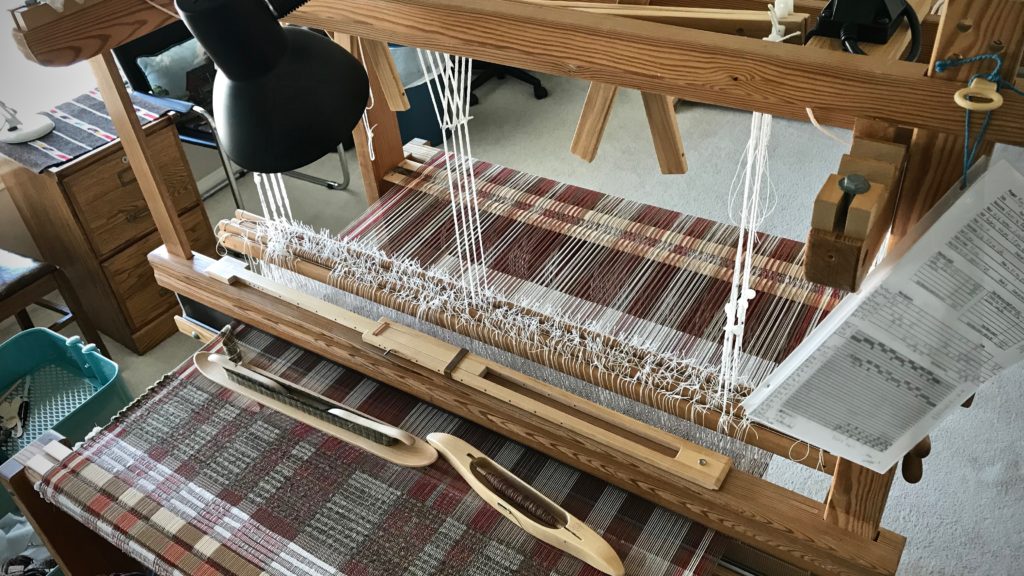
- Even warp tension. Because shafts are both raised and lowered, tension is equal on raised and lowered warp ends. Even warp tension is good for all types of weaving. This even tension makes a tight warp possible. Perfect for linen, and for rugs.
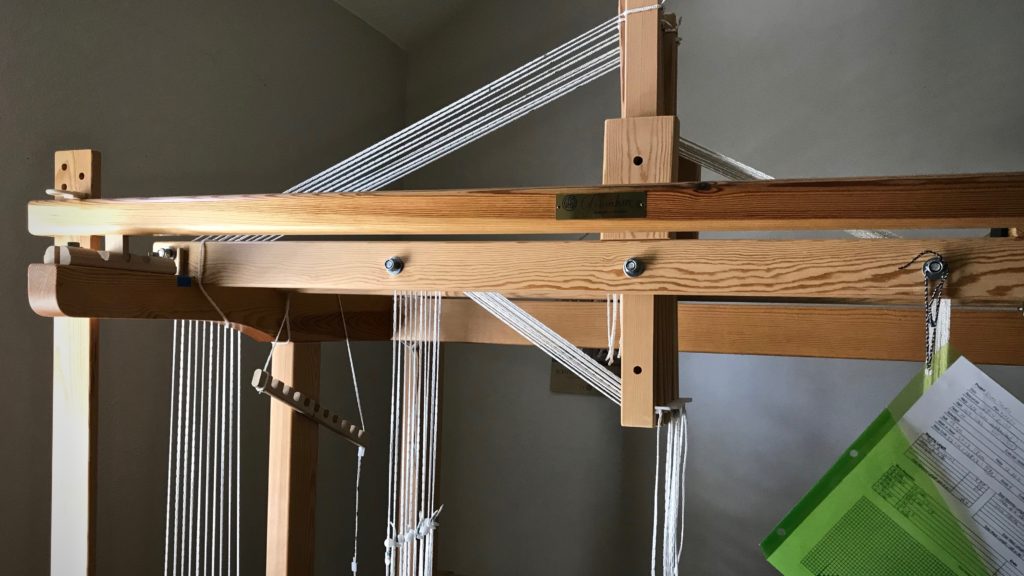
- Threading and sleying ease. Loom bench sits “inside” the Glimåkra Standard loom, comfortably close to heddles and lease sticks for threading and for sleying the reed.
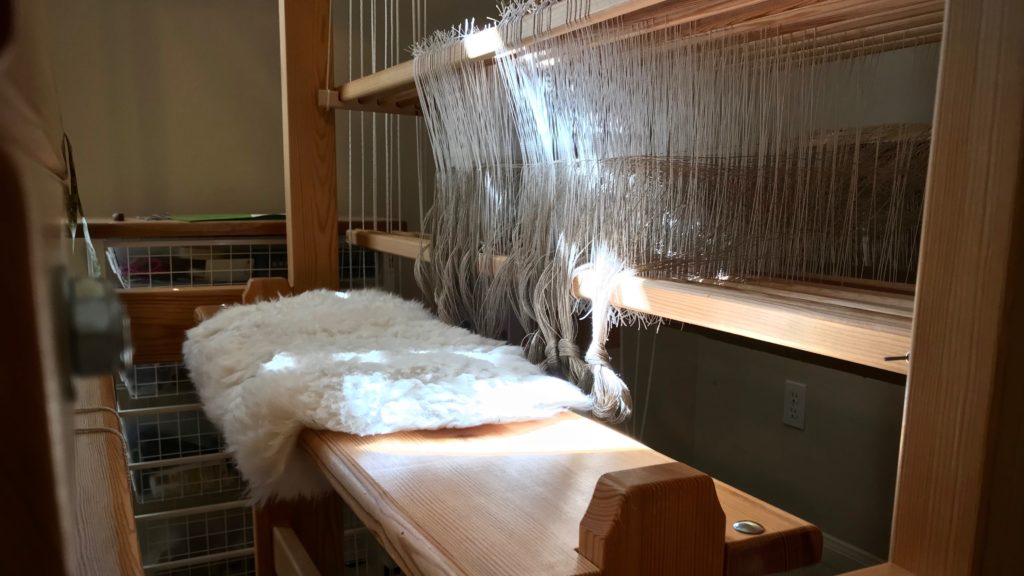
- Texsolv heddles. Heddles can be easily added or removed from shafts (shafts are also easily added or removed). Quiet. Easy to thread.
- Perfect fit. A petite person like me can weave on a large loom (my Standard is 47”/120cm) as comfortably as someone with longer arms and legs. Able to sit in upright posture for weaving.
- Wooden. The loom is primarily wood. Bonus if you appreciate natural beauty of wood. Held together with wooden wedges and a few bolts. No screws or wing nuts.
- Scandinavian clarity. Because of the Swedish loom, I adopt Swedish weaving practices and have an interest in traditional Scandinavian textiles. The loom fits the style. Streamlined design, precision, systematic and logical processes, and beauty with function.
Con
- Treadle tie-ups. Shafts are connected to upper lamms and lower lamms. Treadle cords with a bead at one end are hung in the lamms. Lamms are then attached to treadles. Treadle tie-ups normally fall under the Pros category, because this is what enables the loom to have the clean shed it’s known for. But since I just finished tying up ten shafts to ten treadles (that’s 100 treadle cords), this is my least favorite part right now. 😉 (The weaving pleasure more than makes up for it, though.)
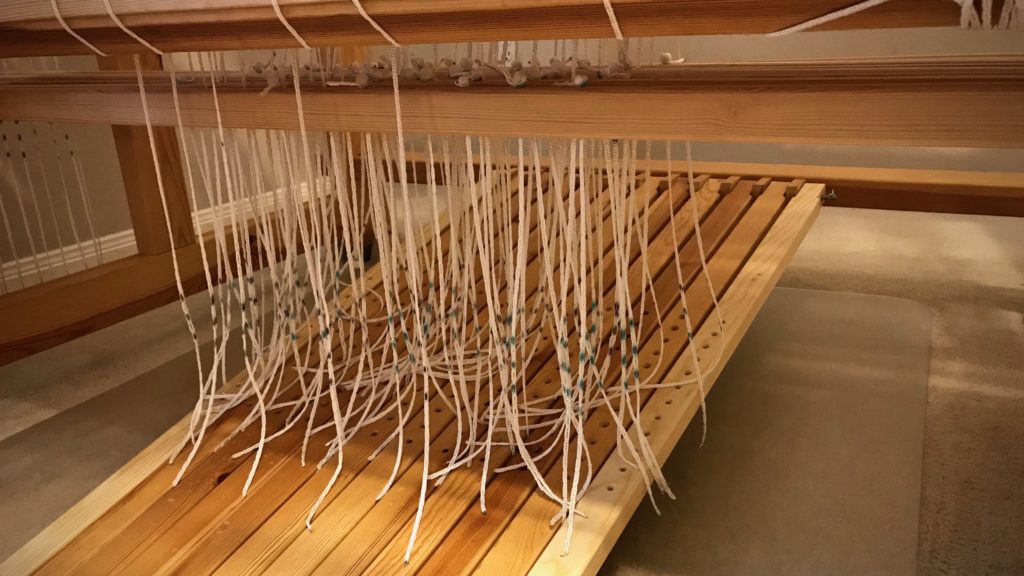
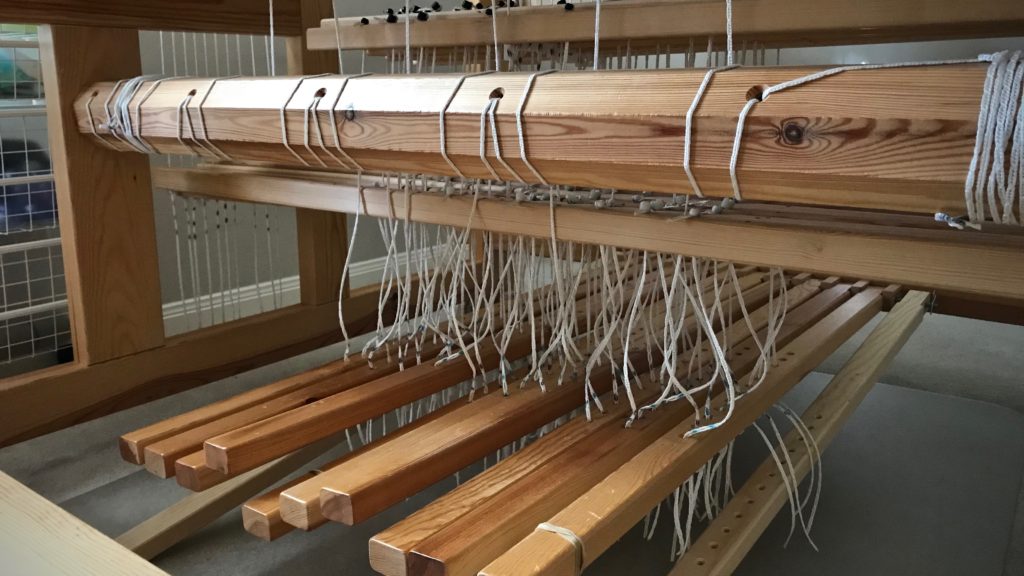
Conclusion:
When I weave on my Glimåkra Standard countermarch loom, I am soaring like an eagle. I’m sailing with the spinnaker up. I am a pipe organ maestro. I am dreaming while fully awake. This is everything I imagined weaving could be, only better.
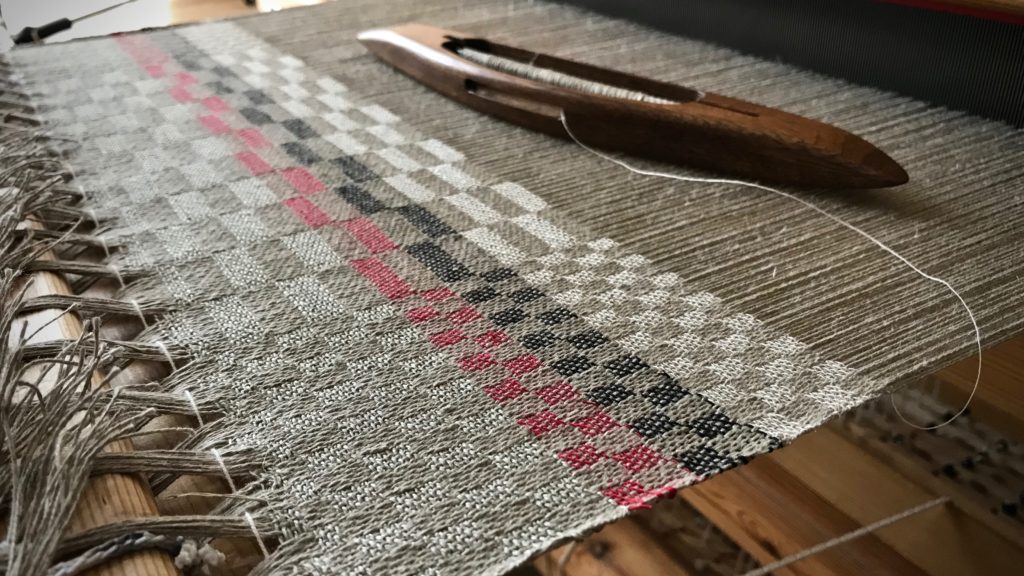
For more in-depth information about countermarch looms, comparisons of looms, and other fantastic resources, see articles written by Joanne Hall, found at Glimåkra USA.
May you live your dream.
Very Happy Weaving,
Karen

This article is exactly what I needed to read, Karen. I have been looking online at websites at the various looms, trying to decide which one I think would be best. I narrowed it down to countermarches for the versatility and sheds but was confused about brands, sizes, etc. This really helps. However,l I have a large learning curve before I jump into buying one unless a great used one suddenly appears.
Many blessings, Karen.
Annie
Hi Annie, It was your previous comment that prompted me to write this. So I thank you for that!
Take your time with research and questions. As you narrow it down, you’ll gain confidence about making the right choice for your circumstances.
Happy weaving,
Karen
Great descriptions/instructions! Yes, sitting on the floor tying up the treadle cords for any contramarsch loom is tedious, but as you said, the results are well worth it. Sounds like you have written an ad for Glimåkra. The same, even somewhat better results can be obtained on an Öxabäck loom, a.k.a “Ulla Cyrus”?
Hi, JAN, Yes, the tie-up can be demanding, but I can see that you enjoy what comes as a result, too.
I’m afraid you’re right. It does sound like an ad for Glimåkra. I’m very happy with my Glimåkra looms, so I may be a little eager about my own experiences.
Öxabäck has a wonderful reputation! I haven’t yet had the pleasure of weaving on one. I’m sure there are details about the Ulla Cyrus and other countermarch looms that I would really appreciate!
Thank you,
Karen
Check out Vavstuga Weaving Studio’s way of tying up the treadles. Becky has figured out how to ditch the legged pegs for knitting needles. So much easier!
Hi Joan, I think Becky’s ingenious method of using knitting needles for tying up treadles is fantastic! I learned it at Vavstuga Basics a few years ago. I use that method when weaving with two, four, or even six shafts.
When weaving with eight shafts, however, I have found that I can get better sheds by tweaking the tie-up after weaving a few inches. And it’s easier to pop out and replace individual pegs than to pull out the knitting needle and redo the whole treadle. So, with eight or more shafts, I prefer the old-fashioned method of pinning each treadle cord.
Thanks for your input!
Karen
I have a 4 shaft Glimåkra. I love it.
Hi, Esther, I can spend hours on my 4-shaft Glimåkra. It’s such a weaver-friendly loom. It’s good to hear of your experience!
Happy weaving,
Karen
I have a Glimakra 4 shaft. I have found it to be great to use. I have had to dismantle it to move and it is very easy to assemble again. My least favorite job is changing the tie up.
Hi Kayleen, Thank you for bringing up how easy it is to dismantle and re-assemble. I didn’t think of including that in my list. That is definitely a big plus!
Changing the tie-up is one of those things of which can be said: “I didn’t necessary like doing it, but I like having done it.” It does give me a good sense of accomplishment!
All the best,
Karen
Thanks Karen, very clear and I love your conclusion. Such prose! It is exactly how I felt when I finally had my Toika countermarch up and running, after years on a counterbalance (which is still very useful, and I like it too). I have graduated to 8 shafts, 8 treadles, this week going to 10 treadles: more texsolv to cut, more crawling to do… 10 shafts comes in a year or so, lots of soaring and playing to do first. Living the journey and reading your blog faithfully!
Hi Gerda, There’s such satisfaction in weaving on a loom that functions so beautifully for the task. That’s great that you are graduating little-by-little adding treadles and shafts. There’s no hurry, because even 2 or 4 shafts is sufficient to have a grand time at the loom.
Thanks so much for sharing your thoughts.
Happy weaving,
Karen
hi Karen, thank you for sharing your experiences with the Glimakra countermarche loom.
I’ve just bought a secondhand Glimakra vertical countermarch floorloom and it is, disassembled, waiting for a special cleanup and a good layer of wax. It’s in very good shape and more than complete and I’m looking forward to discover this beautiful piece of craftmanship.
My goal is to weave with linen and being retired, I’ve enough tim to become friends with her.
All the best, Marjoke
Marjoke, I am excited for you and the friendship ahead between you and your loom!
Happy weaving,
Karen